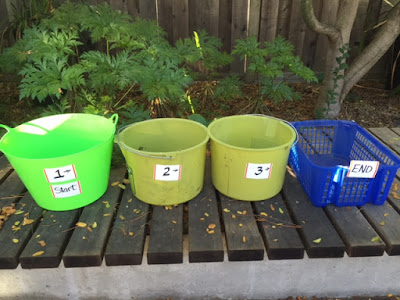Posts
Painting Techniques to Teach
- Get link
- X
- Other Apps
Painting Book Camp Ideas from TAB Facebook Group October 9, 2021 Claire McWilliams Blending. Wet on wet. Dry brush. Composition. 1-pt perspective. Atmospheric perspective. Waiting for stuff that needs to dry before moving on (hahaha) Katie Bonilla I printed out concentric stars on cardstock to practice brush control Amy Van Wyk Gray Brush strokes & mark making/ brush type stretch and explore. black tempera cakes so the color doesn’t play into it value can also be discussed. Linda Arnold Textures, layering, glazing Michelle Riley watercolor lab with a ton of fun techniques resists, tape, dripping, rubbing alcohol, salt, etc. Sonia D'Agnese Gradation, Hard-edge, texture, brushstrokes, layering, varying line width, impasto April Singewald “task party” with 3rd where students had tasks different size brushes, plastic forks and scrapers to make marks on one ...
Splatter Paint Science: Jackson Pollock and Fluid Dynamics
- Get link
- X
- Other Apps
T his article was adapted for middle school students from an original article called “The Cutting Edge Physics of Jackson Pollock” by Lisa Grossman (Wired Magazine. July 2011). You can read the original article here: https://www.wired.com/2011/07/pollock-physics/ For more about Jackson Pollock take a look at the Khan Academy Video: "Why is That Important: Looking at Jackson Pollock. " Untitled. 1948-1949. Jackson Pollock. Drip Paintings Jackson Pollock was an artist who was famous for his drip paintings. Scientists now think that he was using art to explore an area of science called fluid dynamics years before scientists even thought to study it. "His particular painting technique essentially lets physics be a player in the creative process," said physicist Andrzej Herczynski of Boston College, coauthor of a new paper in Physics Today that analyzes the physics in Pollock's art. "To t...
Cleaning Brushes Using the 3 Bucket System
- Get link
- X
- Other Apps

The students in my elementary art classes all want to clean brushes -- and they usually do it badly--each one making a different kind of mess in their own special way. Not to mention all the water they wasted. Without a sink in the room that means wasting water hauled in buckets across campus from the sink in the teacher's room. One day, while hauling water and dreaming of being a child again under the free and open skies of summer camp, a solution popped into my head.... how simple! (Note to parents: summer camp really does prepare a child for life). At camp each camper washed her own dishes -- rinsing, washing and rinsing again down a conga line of 3 buckets. In the art studio it goes like this: Line up the early finishers with brushes in hand. Set the pace with a quick round of "Twinkle Twinkle Little Star" (it takes about 20 seconds). Students sing again while 1-2 kids move down the line swishing their brush in each bucket along with the song. ...
- Get link
- X
- Other Apps

Kids arrive in the elementary art studio with all kinds of preconceived notions about themselves as artists. For example, my particular favs are: "I hate art", and the ever-popular "I don't want to do this because I'm bad at drawing". Breaking these thought bubbles is a priority if they are going to learn anything and probably if they are going to be peaceful participants in the studio. This is the procedure that has worked for the students in my studio--many of them with learning challenges. (1) Training wheels: Kids are encouraged to trace to develop pencil-skill and eye-hand coordination. They are allowed to choose, print, and then trace line drawings of their favorite game characters. (2) Once they feel confident with the basic pencil skill, we move to trace photographs with grey tones. (3) After a few weeks, many students feel they are ready to start working from a reference drawing using observation of a flat surface. (4) Usually around m...